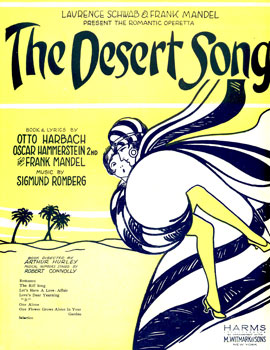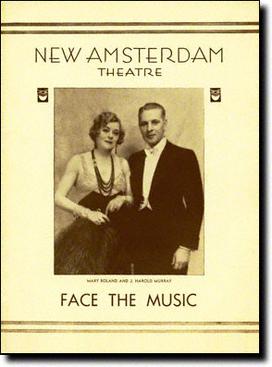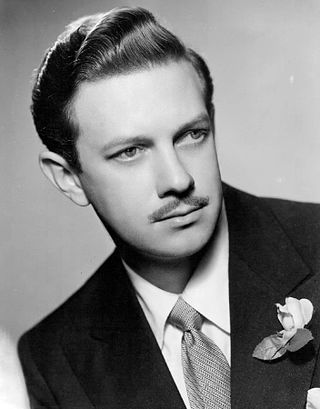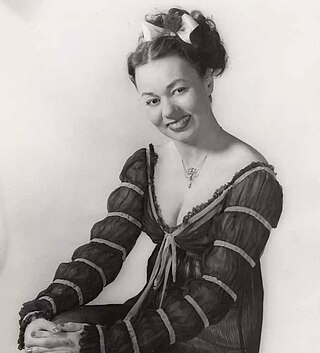
Rodgers and Hammerstein was a theater-writing team of composer Richard Rodgers (1902–1979) and lyricist-dramatist Oscar Hammerstein II (1895–1960), who together created a series of innovative and influential American musicals. Their musical theater writing partnership has been called the greatest of the 20th century.

Victor August Herbert was an American composer, cellist and conductor of English and Irish ancestry and German training. Although Herbert enjoyed important careers as a cello soloist and conductor, he is best known for composing many successful operettas that premiered on Broadway from the 1890s to World War I. He was also prominent among the Tin Pan Alley composers and was later a founder of the American Society of Composers, Authors, and Publishers (ASCAP). A prolific composer, Herbert produced two operas, a cantata, 43 operettas, incidental music to 10 plays, 31 compositions for orchestra, nine band compositions, nine cello compositions, five violin compositions with piano or orchestra, 22 piano compositions and numerous songs, choral compositions and orchestrations of works by other composers, among other music.

Sigmund Romberg was a Hungarian-born American composer. He is best known for his musicals and operettas, particularly The Student Prince (1924), The Desert Song (1926) and The New Moon (1928).

The Desert Song is an operetta with music by Sigmund Romberg and book and lyrics by Oscar Hammerstein II, Otto Harbach and Frank Mandel. It was inspired by the 1925 uprising of the Riffs, a group of Berber fighters, against French colonial rule in Morocco. It was also inspired by stories of Lawrence of Arabia aiding native guerrillas. Many tales romanticizing Saharan North Africa were in vogue, including Beau Geste and The Son of the Sheik.
The Student Prince is an operetta in a prologue and four acts with music by Sigmund Romberg and book and lyrics by Dorothy Donnelly. It is based on Wilhelm Meyer-Förster's play Old Heidelberg. The piece has a score with some of Romberg's most enduring and beautiful tunes, including "Golden Days", "Drinking Song", "Deep in My Heart, Dear", "Just We Two" and "Serenade". The plot has elements of melodrama but lacks the swashbuckling style common to Romberg's other works.

Songs for a New World is a work of musical theatre written and composed by Jason Robert Brown. This was Jason Robert Brown's first produced show, originally produced Off-Broadway at the WPA Theatre in 1995. Brown and director Daisy Prince put together songs he had written for other venues and events, resulting in "neither musical play nor revue, it is closer to a theatrical song cycle, a very theatrical song cycle."

Naughty Marietta is an operetta in two acts, with libretto by Rida Johnson Young and music by Victor Herbert. Set in New Orleans in 1780, it tells how Captain Richard Warrington is commissioned to unmask and capture a notorious French pirate calling himself "Bras Pique" – and how he is helped and hindered by a high-spirited runaway, Contessa Marietta. The score includes many well-known songs, including "Ah! Sweet Mystery of Life".

Little Mary Sunshine is a musical that parodies old-fashioned operettas and musicals. The book, music, and lyrics are by Rick Besoyan. The original Off-Broadway production premiered November 18, 1959 at the Orpheum Theatre in New York City's East Village. Staying in the neighborhood, it moved to the Player's Theatre on June 21, 1961, then, finally, to the Cherry Lane Theatre on March 21, 1962. Closing was Sept. 2, 1962. Combined run was 1,143 performances. It was seen briefly in a West End production in 1962 and has become a popular show for amateur and semi-professional groups in the United States and elsewhere.

Das Dreimäderlhaus, adapted into English-language versions as Blossom Time and Lilac Time, is a Viennese pastiche operetta with music by Franz Schubert, rearranged by Heinrich Berté (1857–1924), and a libretto by Alfred Maria Willner and Heinz Reichert. The work gives a fictionalized account of Schubert's romantic life, and the story was adapted from the 1912 novel Schwammerl by Rudolf Hans Bartsch (1873–1952). Originally the score was mostly Berté, with just one piece of Schubert's, but the producers required Berté to discard his score and create a pasticcio of Schubert music.

Face the Music is a musical, the first collaboration between Moss Hart (book) and Irving Berlin. Face the Music opened on Broadway in 1932, and has had several subsequent regional and New York stagings. The popular song "Let's Have Another Cup of Coffee" was introduced in the musical by J. Harold Murray.
Danny Rutigliano is an American actor.

New Moon is a 1940 American musical film released by Metro-Goldwyn-Mayer and directed by Robert Z. Leonard, with uncredited direction by W. S. Van Dyke.

Maytime is a musical with music by Sigmund Romberg and lyrics and book by Rida Johnson Young, and with additional lyrics by Cyrus Wood. The story is based on the 1913 German operetta Wie einst im Mai, composed by Walter Kollo, with words by Rudolf Bernauer and Rudolph Schanzer. The story, set in New York, is told in episodes covering a long period, from 1840 to the 20th century. Wealthy young Ottillie is in love with Dick, but they are kept apart by family and circumstance. Years later, their descendants marry. Maytime introduced songs such as "The Road to Paradise", "Will You Remember?" and "Jump Jim Crow".

The Firefly was the first operetta written by composer Rudolf Friml, with a libretto by Otto Harbach. The story concerns a young Italian girl, who is a street singer in New York. She disguises herself and serves as a cabin boy on a ship to Bermuda, where she falls in love. Complications arise, and eventually, she becomes a grand opera diva.
Richard Muenz is an American actor and baritone who is mostly known for his work within American theatre. Muenz has frequently performed in musicals and in concerts. He has also periodically acted on television.

Earl Wrightson was an American singer and actor best known for musical theatre, concerts and television performances. His regular singing partner was the soprano Lois Hunt.
The Los Angeles Civic Light Opera (LACLO) was an American theatre/opera company in Los Angeles, California. Founded under the motto "Light Opera in the Grand Opera manner" in 1938 by impresario Edwin Lester, the organization presented fifty seasons of theatre before closing due to financial reasons in 1987. Typically the LACLO presented four to six productions during an annual season. The company produced or co-produced several of their own shows in addition to bringing in shows from Broadway to California, often with their original casts. Productions that originated at the LACLO and then went on to wider success, included Song of Norway (1944), Magdalena (1948), Kismet (1953), Peter Pan (1954) and Gigi (1973). Initially the organization mainly presented American operettas, but by the 1960s the company was presenting mostly musical theatre; although the company never completely left its roots.
Edwin Lester was an American theatre director, impresario, and producer.
New Moon is a 1930 black-and-white American, pre-Code romantic/drama/melodrama musical film version of the operetta The New Moon, with music by Sigmund Romberg and book and lyrics by Oscar Hammerstein II and others. The original stage version premiered on Broadway in 1928. The 1930 film is also known as Komissa Strogoff in Greece, Nymånen in Denmark and Passione cosacca in Italy. A second adaptation, also titled New Moon, was released in 1940.

Helena Bliss was an American actress and singer. A talented soprano, she actively performed in musicals, operettas, and operas in the United States, both on stage and on television and radio, from the 1930s through the 1950s. She is best known for her portrayal of Nina Hagerup in the original Broadway production of Robert Wright and George Forrest's Song of Norway. She also appeared successfully in a few productions on London's West End.














